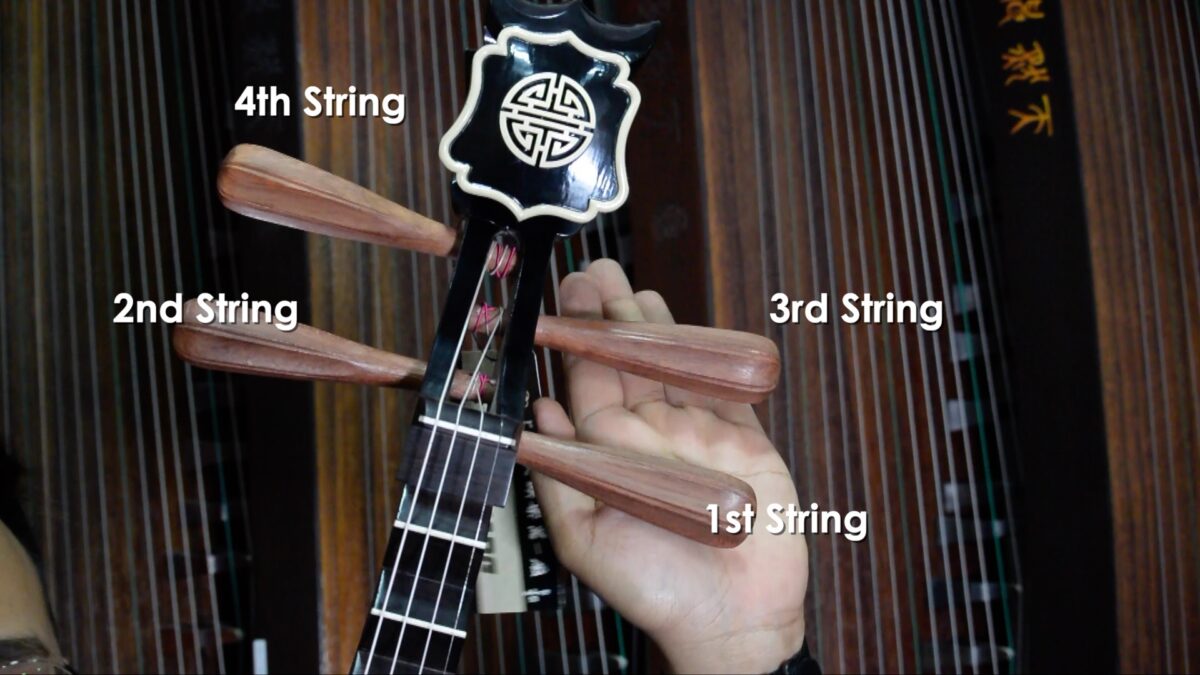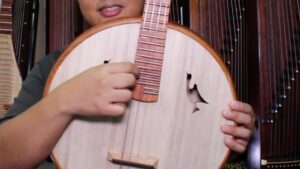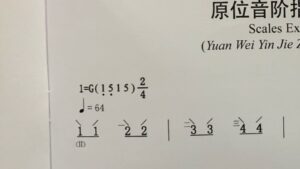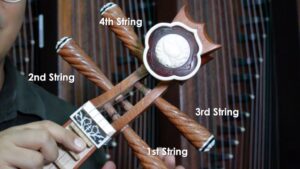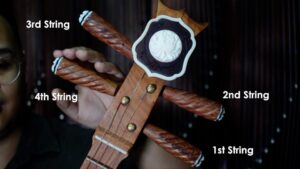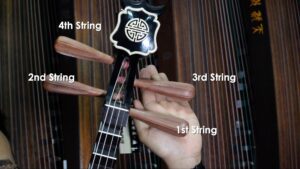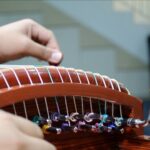
How to Tune Your Guzheng
May 7, 2025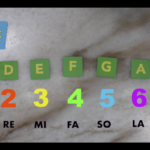
Jianpu 101: How to read Numeric Scores
May 8, 2025
🎵 Mastering the Art of Tuning Zhongruan, Liuqin, and Pipa: A Complete Beginner’s Guide
Welcome to another hands-on “How-To” guide from Eason Music! Today, we’re entering the world of tuning — specifically, how to tune three of the most captivating Chinese plucked string instruments: the Zhongruan, Liuqin, and Pipa.
If you’ve ever wondered:
- “How do I tune my Zhongruan?”
- “What pitch does each string of the Liuqin or Pipa correspond to?”
- “Why does my instrument still sound off even after tuning?”
Then this guide is for you. 🎯
🎯 What You’ll Need
Tuning these instruments is less intimidating than it seems. You’ll just need:
- A chromatic tuner (digital or app-based)
- Your picks or faux nails
- A basic understanding of standard tuning
🔍 String Names: How to Identify Them
When holding your instrument upright (playing position), the string farthest to your right — and usually the thickest — is the 4th string. Moving leftwards:
- 3rd string
- 2nd string
- 1st string (thinnest)
So: Right to left = 4 ➝ 3 ➝ 2 ➝ 1
🎼 Standard Tunings
Here are the most common standard tunings, as used in ensemble scores:
🔸 Zhongruan Tuning
- 4th String: G2
- 3rd String: D3
- 2nd String: G3
- 1st String: D4
🔸 Liuqin Tuning (One octave higher than Zhongruan)
- 4th String: G3
- 3rd String: D4
- 2nd String: G4
- 1st String: D5
🔸 Pipa Tuning
- 4th String: A2
- 3rd String: D3
- 2nd String: E3
- 1st String: A3
Note: The number after the note (e.g. G2, D4) refers to the octave. Middle C is C4, which you can use as a benchmark.
🧠 Understanding Peg Placement
Correctly identifying which peg belongs to which string is half the battle. Each instrument has its own peg system:
- Zhongruan: Equipped with mechanical pegs (like a guitar)
- Liuqin & Pipa: Traditional friction pegs with unique layouts
🔧 How to Tune Each Instrument
Basic Tuning Directions:
- Anti-clockwise = Tightens string = Pitch goes up
- Clockwise = Loosens string = Pitch goes down
🪝 Pro Tip for Pipa & Liuqin
You may need to gently push the peg inward while turning to maintain tension and prevent slipping — especially for friction pegs.
🎯 Liuqin’s Secret Weapon: Fine Adjusters
Located at the bottom of the Liuqin, these fine tuners help make micro-adjustments without touching the pegs.
- Clockwise: Lowers the pitch
- Anti-clockwise: Raises the pitch
Perfect for precise tuning on thinner strings.
🎸 String Pulling Trick
If your string sounds slightly sharp or flat, you can gently pull the string upward (like stretching it) to nudge the pitch. It’s a common trick used by seasoned players — just be gentle!
🎥 Watch It in Action
Want to see the tuning process in real-time? Check out our full instructional video below:
🧰 Need Help?
Tuning not going as planned? We’re here to help. Reach out via our contact form, leave a comment, or visit our studio. There’s no shame in needing a little help getting your tone just right. 😉
🎁 Quick Reference Chart
| Instrument | 4th String | 3rd String | 2nd String | 1st String |
|---|---|---|---|---|
| Zhongruan | G2 | D3 | G3 | D4 |
| Liuqin | G3 | D4 | G4 | D5 |
| Pipa | A2 | D3 | E3 | A3 |
🎉 Final Thoughts
Tuning is the foundation of beautiful music. Once your Zhongruan, Liuqin, or Pipa is in tune, your practice becomes more enjoyable and your performance more expressive.
Stay tuned for more tutorials from the team at Eason Music!

